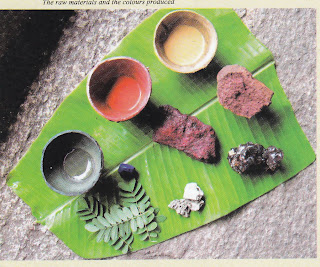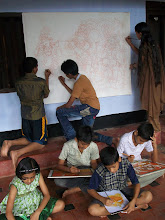on Sunday 4th April 2010
between 10am &1pm noon
Venue:Manavedan Auditorium,Thrissala Bhagavathi Temple,Mankave Palace,Calicut 7
Titled, 'Puzha Malayalam', the 400-page book is looking at a participatory model where people from different spheres of life join us in the publication of the book. As a small step towards this, we are inviting interested people through a
drawing competition from across the world to sketch the introductory pages of the fourteen chapters.
'My river' is the theme of the competition. This could be a reflection of your insights or experiences associated with rivers.This could be about rivers from any parts of the world. Use your imagination to show the role of rivers played in your life. Let the river flow, from Nila to Ganges, to Thames to Danube...
Out of the sketches, we will select 14 entries in three different age categories, which will be incorporated into the individual chapters of the book. The winners of 14 entries will also get an opportunity to have an experiential holiday for a week along Bharatapuzha (River Nila) that gives insights into its culture, folk art forms, history, people and life.
A board of experts commissioned by Nila Foundation will be short-listing and selecting the winning entries.
Selected entries will also be exhibited at the book launch on 05 June 2010 at Thunjan Parambu literature park in Tirur, Kerala.
As the awards will have three categories for ages below 10, 18 and above, we welcome people from all ages to participate in this initiative.
As the awards will have three categories for ages below 10, 18 and above, we welcome people from all ages to participate in this initiative.
Please register before April 3, 2009.
Address:Nila Foundation
SMAAS, Kandath Complex Poongottukulam,
Tirur- 676101 Malppuram(Dist), Kerala, India
Ph: +91.9446280603 / 9605396238Contact person: Prakash Memail address to sent the sketches: nilafoundation2010@gmail.com
Subject: Sketches for Puzha Malayalam
SMAAS, Kandath Complex Poongottukulam,
Tirur- 676101 Malppuram(Dist), Kerala, India
Ph: +91.9446280603 / 9605396238Contact person: Prakash Memail address to sent the sketches: nilafoundation2010@gmail.com
Subject: Sketches for Puzha Malayalam











 Gopis praise Krishna :
Gopis praise Krishna :







































